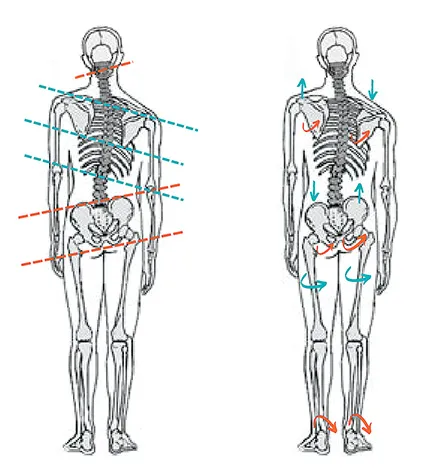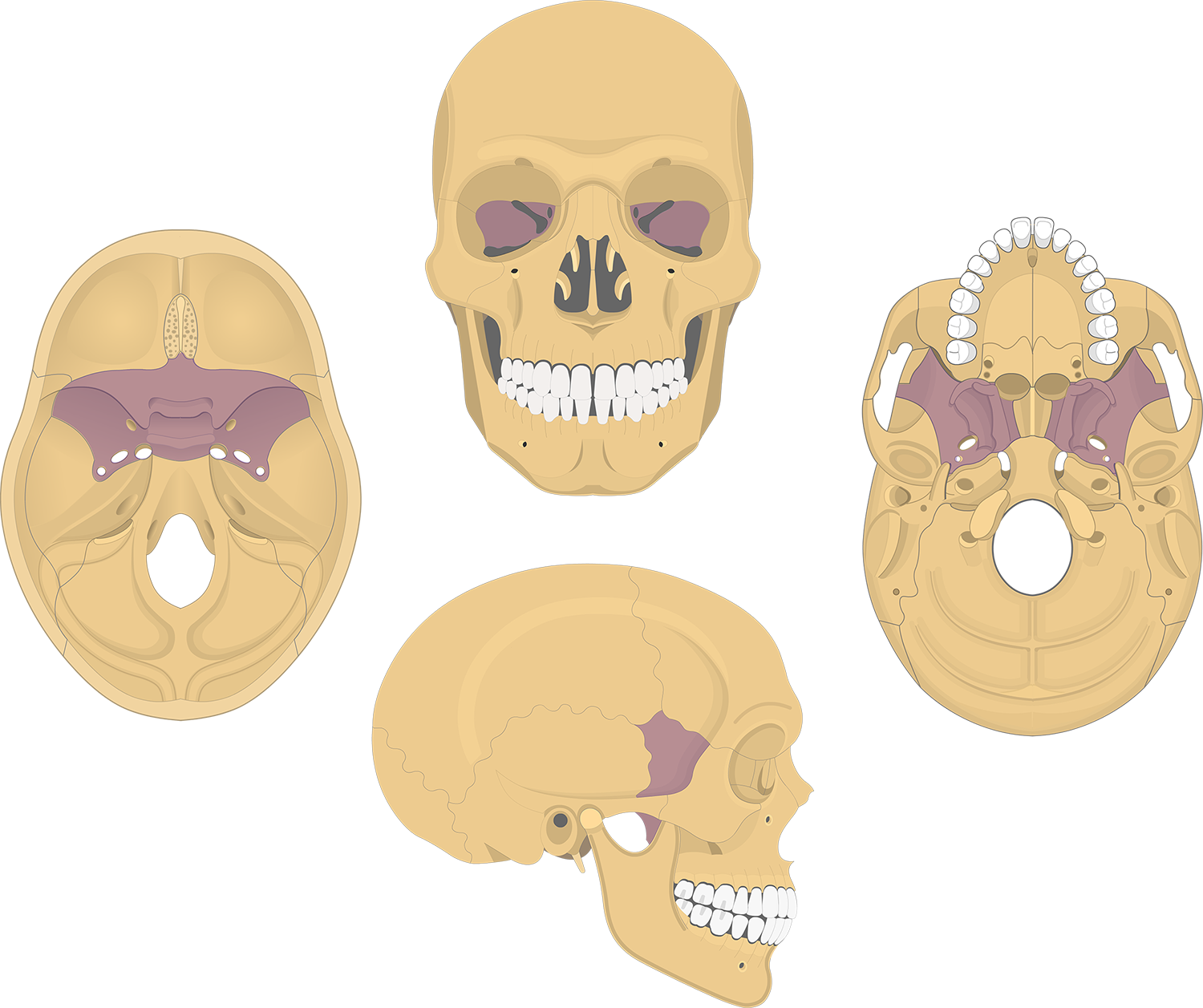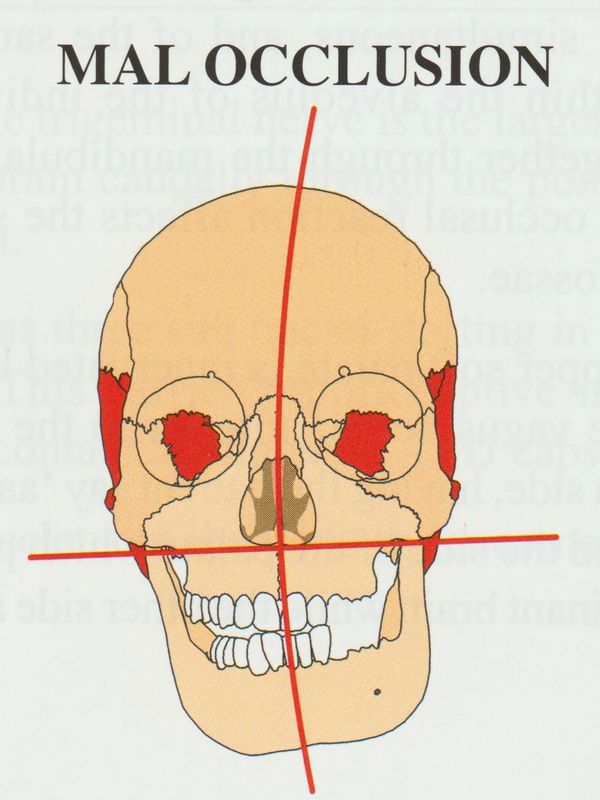Facial symmetry
Part 1
Facial asymmetry overview
- If you have an asymmetrical face, especially, a rather short, compact looking face, it could be due to a sort of normal compensatory cranial strain pattern from a Left AIC body twist pattern. It does not mean you have too much issues in your system. Rather, it is a normal physiological adaptation pattern for being a bit "stuck" in the right stance phase of gait, especially if your occlusion (bite) and vision (eye vision asymmetry) have no issues. You may need to train yourself on standing on the left side appropriately with PRI techniques and try to resolve and underlying dominant Left AIC pattern.
- Example:
- However, if you have the following conditions: a rather long face, your molars does not contact each other, any occlusion issues such as open bite, crossbite, crowded teeth, any vision issues. In that case it requires more investigation and treatment options for your specific facial asymmetry.
- Example:
The reasons behind facial asymmetry
- Facial asymmetry is complex and is related to how your body aligns, bends and shift every part of itself to make your interaction with the outside world more smooth and comfortable (in case of existing malfunction in stabilization system).
- Outcomes of some of your body attempts to compensate the malfunctioning units of the stabilization system and realign cranial bones in a certain way to "fix" the issue become evident as visible facial asymmetry.
- The reasons that could cause destabilization of the system and facial asymmetry as the result include malfunctioning of such parts of the stabilization system as: total musculoskeletal (postural and dynamic) subsystem, visual subsystem and occlusal (bite alignment) subsystem.
List of cranial bones, with potential alignment issues
- Occiput (back of the skull)
- Temporal Bones
- Sphenoid
- Maxilla
- Mandible (Jaw)
Part 2
TMCC. Temporomandibular Cervical Chain
- The main function of the TMCC are: to control your neck, to provide stability for the neck during respiration, to provide support for the scapula, to provide support for the voice box, to provide the base for your skull and jaw (Temporomandibular joint).
- Outcomes of some of your body attempts to compensate the malfunctioning units of the stabilization system and realign cranial bones in a certain way to "fix" the issue become evident as visible facial asymmetry.
- The reasons that could cause destabilization of the system and facial asymmetry as the result include malfunctioning of such parts of the stabilization system as: total musculoskeletal (postural and dynamic) subsystem, visual subsystem and occlusal (bite alignment) subsystem.
Left Cranial Sidebend (R TMCC) pattern
- The most common facial asymmetry that is occurring as the compensation of the underlying Left AIC and Right BC pattern.
- Left cranial sidebend refers to a specific movement or position of the head and neck. In anatomical terms, the head is tilted or inclined towards the left side while keeping the chin level. This movement primarily occurs at the atlanto-occipital joint, which is the joint between the base of the skull (occipital bone) and the first cervical vertebra (atlas).
- The atlanto-occipital joint allows for various movements of the head, including flexion, extension, rotation, and lateral bending. The left cranial sidebend involves a lateral bending of the head towards the left side, resulting in a tilting or inclining of the head to the left.
- Cascade of compensation from L AIC: R BC and R TMCC. This R TMCC pattern and muscular activities create the position of temporal bones which are externally rotated on the left and internally rotated on the right. This pulls the jaw (mandible) to the left.
- The muscles responsible for this type of asymmetry are: right Sternocleidomastoid, right Scalenes, Temporalis (ant. fiber), Masseter, Medial pterygoid, Rectus capitis posterior major, Obliquus capitis, Rectus capitis anterior, Longus capitis and Longus colli.
- The right Sternocleidomastoid helps turn the head left and pulls the right temporal bone into internal rotation, which visually appears as asymmetrical temples.
- Mandible moves left because of the temporal bone external rotation on the left. This causes an asymmetrical appearance of the chin, being shifted to the left side, relatively to the rest of the face. Potentially creating an asymmetrical looking masseters, gonions and ramus areas.
- Sphenoid bone is rotated right and lower on the left. This creates an uneven appearance of the midface and eye areas, nose deviates to the left and exaggerates already asymmetrical looking mandible.
- Maxilla rotates right. This creates an uneven appearance of the midface, left eye has "drooping" appearance, asymmetrical cheekbones (and hollow cheeks), nose deviates to the left, which exaggerates already asymmetrical looking mandible.
- As the result of these bones compensational movements associated with the left cranial side bend it creates a visual outcome of the face which has: lower left eye, more prominent left ear, chin shifted left, and more compact midface on the left side of the face.
Right Cranial Torsion
- This is an additional layer of compensation on top of the Right TMCC pattern.
- Involves a twist or rotation of the head towards the right side, typically occurring at the atlanto-occipital joint and/or the upper cervical spine.
- Can be caused by the excessive muscle tone and pull of the right upper trap, which results in a downward pull of the back of the head (occiput) down on the right side.
- Chin shifted to the right.
- It usually could involve sensory integration issues such as vision, hearing, and/or occlusion. Autonomic dysfunction also could be seen often.
- The major difference between left cranial sidebend and right cranial torsion is that there is extra torque in the spheno-basilar junction. In left cranial sidebend, the sphenoid and occiput are rotated in the same direction (left sidebend). However, in right cranial torsion, the occiput is rotated to the other direction (left sidebend) while the sphenoid is in right sidebend (rotation).
- With right cranial torsion, we tend to see in the face: lower left eye, сhin deviates to the right, the left ear might be prominent but not always.
Part 3
How to fix facial asymmetry
- I can't give you a full personal fix for your particular case of facial asymmetry, as it requires a complex visual evaluation and interaction of multiple areas of the body, from head to toe basically.
- Any muscle imbalance responsible for facial asymmetry tends to be a full-body event, with entire chains of muscles over or under-functioning. Therefore, resolving muscle imbalance permanently requires adjustment of the whole neuromuscular control system for all chains of muscles.
Will chewing on one side fix my jaw (masseter) asymmetry?
- Highly unlikely it will fix it. The reason is that in most of the cases related to jaw (ramus, gonions and chin) or masseter volume asymmetry is not lack of mechanical loading (chewing on one side), but muscular (including size asymmetry) adaptations to various shifts and rotation of the related bone structures.
- Any muscle imbalance responsible for facial asymmetry tends to be a full-body event, with entire chains of muscles over- or under-functioning. Therefore "just stretching that one muscle" is likely going to fail in an attempt to override the logic of the whole body muscular and neural systems.
Will stretching the short (tight) muscles and strengthening the weak muscles program work?
- The asymmetry, which is visually evident is likely not just specifically located in that area. Its likely a result of adaptation governed by the whole body muscular and neural systems. Therefore "just stretching that one muscle" is likely going to fail in an attempt to override the logic of the whole body muscular and neural systems.
- The real cause of the imbalance: our muscles are adapted to balance the neural inputs, our habitual posture, breathing and movement patterns. Unless we fix all the required parameters, stretching and strengthening single pairs of muscle is unlikely to result in a lasting change.
:upscale()/2019/03/07/017/n/1922398/7771729d5c81a87e482e93.22227245_.jpg)



:watermark(/images/watermark_only_413.png,0,0,0):watermark(/images/logo_url_sm.png,-10,-10,0):format(jpeg)/images/anatomy_term/occipital-bone/PigctxPFdKYNxXeccxAFg_Occipital_bone_02.png)
:background_color(FFFFFF):format(jpeg)/images/article/the-temporal-bone/ywNY1IMPj41FcRUZbG7A_os_temporale_atlas_EpE1P73TifVXOhJUi76uiA.png)

:background_color(FFFFFF):format(jpeg)/images/library/13967/Maxilla.png)







